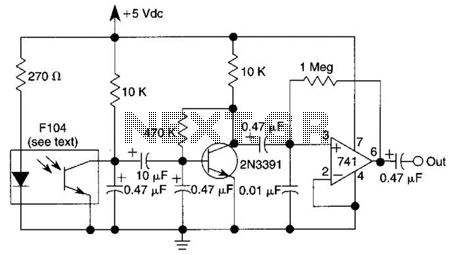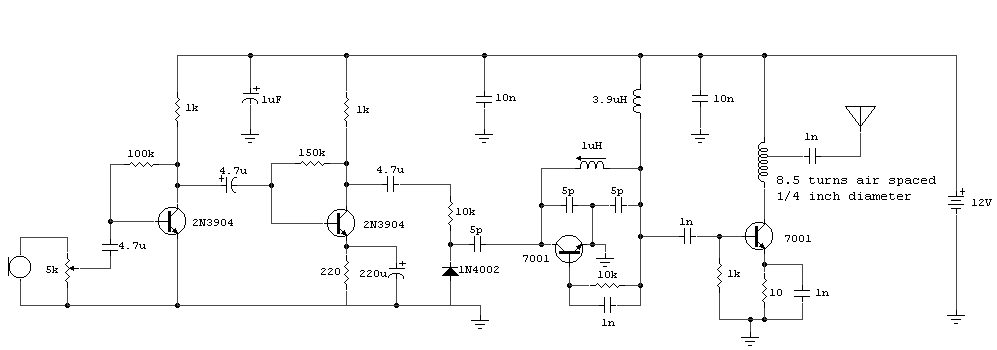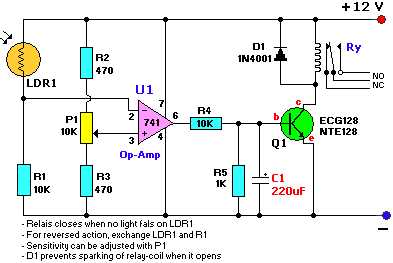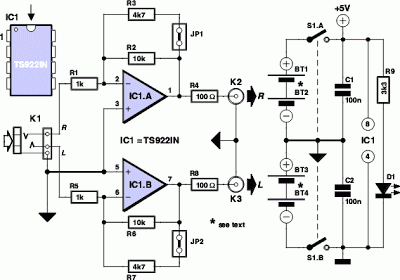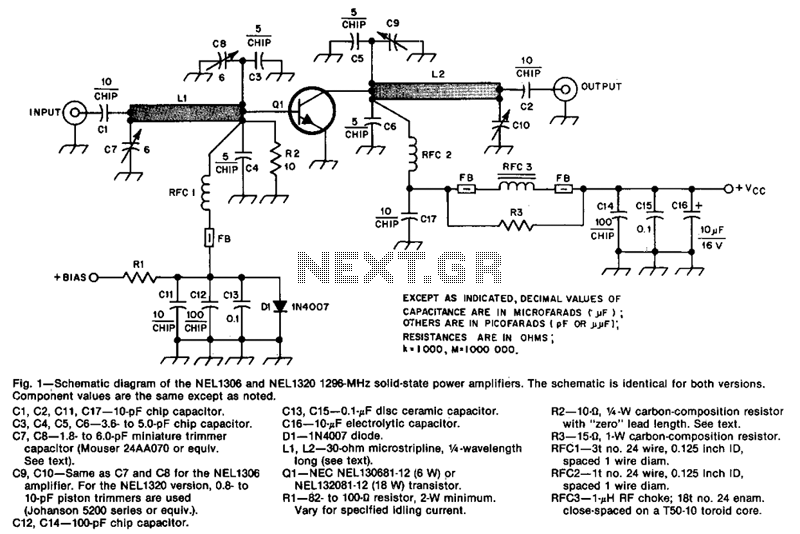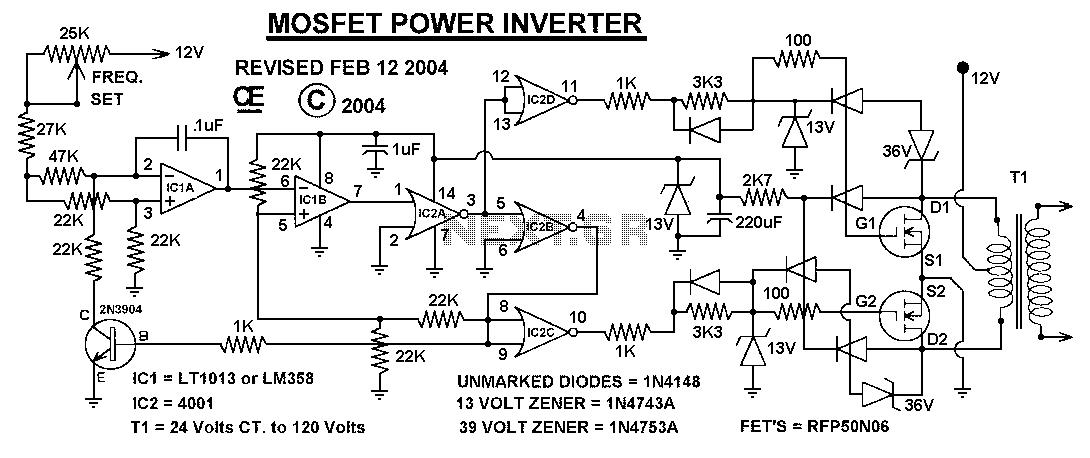
Thermocouple cold junction compensation amplifier circuit

The AD587 is a precision voltage reference providing a 10 V output, generated using a 27 kΩ resistor along with a compensation diode (1N4148) and a thermocouple. This setup connects to the VI + N terminal of a differential amplifier, establishing a fixed operating point. The output voltage from the thermocouple is fed into the differential amplifier. The INA131 serves as a gain amplifier, where the output voltage (Vo) is expressed as Vo = IOO (upbraid - Va). By setting the gain to 100, any changes in the output voltage will depend on the value of Va, allowing for adjustment of the amplifier's operating point.
The AD587 precision voltage reference is designed to deliver a stable 10 V output, which is critical for high-accuracy applications. The voltage reference utilizes a 27 kΩ resistor in conjunction with a 1N4148 compensation diode, which helps to mitigate temperature variations that could affect the voltage output. The thermocouple integrated into the circuit provides a voltage that varies with temperature, thus enabling the system to respond dynamically to changes in environmental conditions.
The differential amplifier plays a crucial role in this configuration. By connecting the thermocouple output to the VI + N terminal of the amplifier, a fixed operating point is established, facilitating precise measurements. The INA131 gain amplifier amplifies this differential signal, with the output voltage (Vo) calculated as Vo = IOO (upbraid - Va). The gain setting of 100 amplifies the input signal, ensuring that even small variations in the thermocouple output can be accurately measured.
Adjusting the amplifier's operating point is essential for maintaining accuracy in measurements. By varying the value of Va, the output voltage can be fine-tuned, allowing for precise calibration of the system. This flexibility is particularly valuable in applications where temperature readings must be closely monitored and controlled, ensuring that the output remains within desired specifications. Overall, the combination of the AD587 voltage reference, thermocouple, and differential amplifier creates a robust and reliable circuit for precision temperature measurement and control.AD587 precision voltage reference 10. OOV generated by 27kfl resistor added compensation diode IN4148 and the thermocouple, and to VI + N terminal of the differential amplifier provides a fixed operating point. Thermocouple output voltage to the differential amplifiers feet, INA131 gain amplifier, the output voltage vo = IOO (upbraid -Va), once readers tune of 100 set in the future, the amount of change of the output voltage decided by Va. Thus, n can adjust the operating point of the amplifier.
The AD587 precision voltage reference is designed to deliver a stable 10 V output, which is critical for high-accuracy applications. The voltage reference utilizes a 27 kΩ resistor in conjunction with a 1N4148 compensation diode, which helps to mitigate temperature variations that could affect the voltage output. The thermocouple integrated into the circuit provides a voltage that varies with temperature, thus enabling the system to respond dynamically to changes in environmental conditions.
The differential amplifier plays a crucial role in this configuration. By connecting the thermocouple output to the VI + N terminal of the amplifier, a fixed operating point is established, facilitating precise measurements. The INA131 gain amplifier amplifies this differential signal, with the output voltage (Vo) calculated as Vo = IOO (upbraid - Va). The gain setting of 100 amplifies the input signal, ensuring that even small variations in the thermocouple output can be accurately measured.
Adjusting the amplifier's operating point is essential for maintaining accuracy in measurements. By varying the value of Va, the output voltage can be fine-tuned, allowing for precise calibration of the system. This flexibility is particularly valuable in applications where temperature readings must be closely monitored and controlled, ensuring that the output remains within desired specifications. Overall, the combination of the AD587 voltage reference, thermocouple, and differential amplifier creates a robust and reliable circuit for precision temperature measurement and control.AD587 precision voltage reference 10. OOV generated by 27kfl resistor added compensation diode IN4148 and the thermocouple, and to VI + N terminal of the differential amplifier provides a fixed operating point. Thermocouple output voltage to the differential amplifiers feet, INA131 gain amplifier, the output voltage vo = IOO (upbraid -Va), once readers tune of 100 set in the future, the amount of change of the output voltage decided by Va. Thus, n can adjust the operating point of the amplifier.
